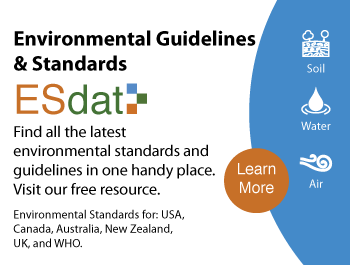Maximum Contaminant Levels (MCLs) represents the highest acceptable level of contaminants in drinking water. The unit used for MCLs is milligrams per litre (mg/L), which corresponds to parts per million (PPM). The Federal Water Quality Maximum Contaminant Levels (MCLs) are contained under the Safe Drinking Water Act (SDWA). MCLs are provided for a list of contaminants that include arsenic, cadmium, chlorine, ethylbenzene, lead, uranium, among others. They belong in the broad categories of either microorganism, inorganic chemicals, disinfectants, disinfectant byproducts, organic chemicals, or radionuclides. EPA provides a detailed table for contaminants with information such as MCL, possible health effects upon long-term exposure, common sources of the contaminant in drinking water, and Public Health goals. EPA’s regulations require relevant systems to enforce disinfection and filtration in circumstances where the MCLs are not met.
The defined MCLs are aimed at protecting the public from undesired health consequences of contaminants in drinking water. Potential effects upon long-term exposure to contaminants that exceed MCLs include increased risk of cancer, kidney, liver, and eye problems, nervous system problems, anaemia, circulatory system problems, bone disease, blood problems, and reproductive problems. Contaminant sources include discharge from factories, runoffs from agricultural chemicals, mineral deposits erosions, and wastewater treatment. The federal regulations provide guidelines for states on the standards of drinking water.
To come up with MCL for contaminants, EPA uses maximum contaminant level goals (MCLG) which are non-enforceable public health goals that represent the level of a contaminant that does not affect human health. EPA also suggests treatment techniques (TT) that can be applied to water systems. These techniques, together with MCLs, are known as primary standards or the National Primary Drinking Water Regulations (NPDWRs).
Federal Water Quality Maximum Contaminant Levels (MCLs) are now available in ESdat. ESdat is a specialist environmental database system; used to validate and import a broad spectrum of Environmental Data and to help users analyze and report it.
ESdat Online delivers a highly cost-effective and efficient approach to store your ongoing monitoring environmental data, optionally with a historical data upload provided as a getting started service. ESdat Online is perfect if you want a cloud-based system that collates and reports your ongoing laboratory and field results.
ESdat Server provides the advantages of ESdat Online with the option of adding ESdat Desktop for data experts to upload their historical data, effectively interrogate the raw data being used within the database, and automatically launch and send data to other Desktop Applications such as Surfer, ArcGIS and Excel.
A variety of complementary products are also available to help with related work, such as sample planning and electronic Chain of Custody (LSPECS), offline field data collection or bore logging (pLog), production of bore logs (ESlog), public portals and customized reporting.
All compiled environmental guidelines and standards are shown here. These are pre-loaded into ESdat Online.

References
EPA (2009). National Primary Drinking Water Regulations. Retrieved from https://esdat.net/Environmental%20Standards/US/Federal/US%20Federal%20MLCs.pdf
EPA (2017). National Primary Drinking Water Regulation Table. Retrieved from https://www.epa.gov/ground-water-and-drinking-water/national-primary-drinking-water-regulation-table






